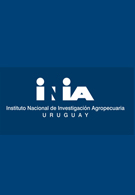ABSTRACT.- Grasslands are among the most human-modified biomes worldwide due to the expansion of croplands and afforestation. In the scenario of productive intensification, it is necessary to generate alternatives to model land-cover changes and their environmental consequences. This study aimed to generate land-cover projections and quantify the impact of these changes on ecosystem service supply in Uruguay. To achieve this, we used land-cover maps, Markovchain models and an ecosystem services supply index (ESSI). Transition probabilities between land-cover classes were calculated for two time periods (2000-2010 and 2010-2019) based on maps from 2000, 2010 and 2019. These probabilities informed two Markov chain models to project land-cover changes up to 2037. With the projected land-cover maps, spatial models were used to relate the proportion of croplands and grasslands with the ESSI. Our results indicate a continued expansion of croplands and afforestation over the coming decades, while grasslands will remain the dominant land cover, representing 46% of the landscape by 2037. Grasslands exhibited the highest probability of persistence in both periods, while croplands and afforestation increased their persistence probability by 60% and 13%, respectively. The ESSI shows a 5% decrease between 2000 and 2037. These findings highlight the ongoing transformation of Uruguay's landscapes and the potential trade-offs between land-use intensification and ecosystem services. The results provide valuable empirical evidence to support territorial planning and sustainable management strategies, helping to balance production needs with environmental conservation. © 2025 Ecological Society of Australia.

